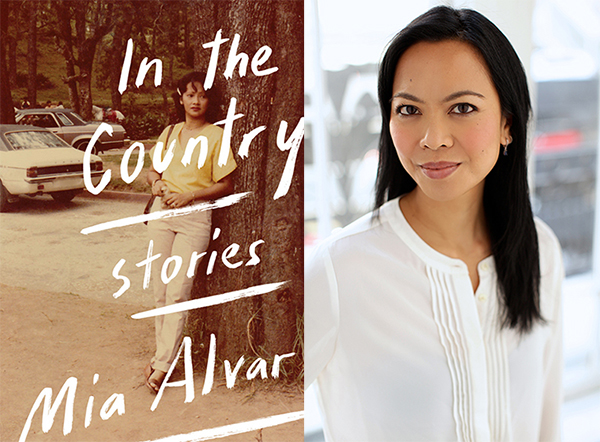
Books were just the ticket for Mia Alvar when she was growing up, moving from one country to another. Born in Manila, Alvar moved to Bahrain with her family when she was only 6; four years later the Alvars settled in New York for good.
Her itinerant childhood made explaining where she’d been a complex exercise. “In casual conversation, I felt I was always oversimplifying, always leaving things out,” she explained.
“Books, on the other hand, didn’t require such easy answers. Reading and writing fiction gave me more time and space to deal with these complexities.” A love for making up her own stories led to a serious devotion to short stories even as she attended to studies at Harvard and Columbia.
This is what led to “In the Country: Stories,” Alvar’s first book, from prestigious publisher Alfred A. Knopf. The nine intricate, moving stories in the book reflect bits and pieces of her own personal odyssey, though her Filipino characters move around in different time periods and circumstances, as the protagonists muddle their way through events in Manila, Bahrain and New York.
This literary dislocation hasn’t gone unnoticed as Alvar’s debut has received rave reviews. NPR said, “Alvar is the kind of writer whose imagination seems inexhaustible, and who stirs up an answering desire in her readers for more and more stories.”
The New York Times added, “Clearly a writer with enchanting powers, Alvar wills us to crisscross the globe with them all over again.”
This bright new Filipino-American writing star is just getting warmed up. The New York-based Alvar shared her own amazing, complex journey with Super through email.
Here are excerpts:
Why choose the short story as a medium?
In college, when I was starting to write fiction in earnest, several short story collections came out in the United States that made a huge impact on me: among them “Drown” by Junot Díaz, “Hunger” by Lan Samantha Chang, “Interpreter of Maladies” by Jhumpa Lahiri, and “For the Relief of Unbearable Urges” by Nathan Englander.
Reading them, I loved the experience of piecing together a vast community, one character or event or relationship at a time.
These were the books, not novels, that made me consider the family and diaspora I’d grown up in for the first time as literary material. And the short-story form seemed to suit the conditions of immigrant life that I wanted to write about: I was often inspired by anecdotes told within a long-distance phone call, a short visit, or a letter.
Please tell us how you got published by Alfred A. Knopf.
Many years ago, my literary agent and I found each other when she liked a story that I had published in a magazine called The Cincinnati Review. I didn’t have a whole book yet, so we worked together for several years on the collection: revising each story, placing a few of them in literary journals, and finally putting it all together.
When the manuscript was ready, my agent pitched it to the editors and publishing houses that she thought would be a good match. Thankfully, my wonderful editor Lexy Bloom was interested, and that’s how I got to work with her and the fantastic team at Knopf.
You have received amazing praise for the book. How does it feel?
Humbling, incredible, and very gratifying. I worked on the book for over 10 years, through lots of uncertainty and anxiety and failure. I feel terribly lucky that readers seem to have connected with these characters and become invested in their lives. Even seeing a story of mine summarized in a reviewer’s own words feels magical to me, the idea that these narratives now have a life outside my own head.
Which is your favorite story in the book and why?
I honestly don’t have a favorite. With apologies to (real) mothers of (human) babies, the stories really do feel like my children in a way, each one special to me and frustrating to me for different reasons. I can say that the title novella, “In the Country,” seemed to have the most to teach me. It was the hardest to write, the most rewarding to finish. I don’t know if it’s the best story in the collection, but I’d like to think it did the most to stretch and hopefully improve my writing abilities.
What’s next for you?
I’m working on a novel that follows Milagros, from the title story of the collection, and her life after the events of “In the Country.”
What advice would you give aspiring writers?
Read as much as you can and write every day (this is similar to the best diet/exercise advice: simple, but not easy)! Also, don’t believe everything you read in a writer interview. Like actors and performers, we sort of lie for a living.
“In the Country: Stories” is available in hardcover from Fully Booked.













































